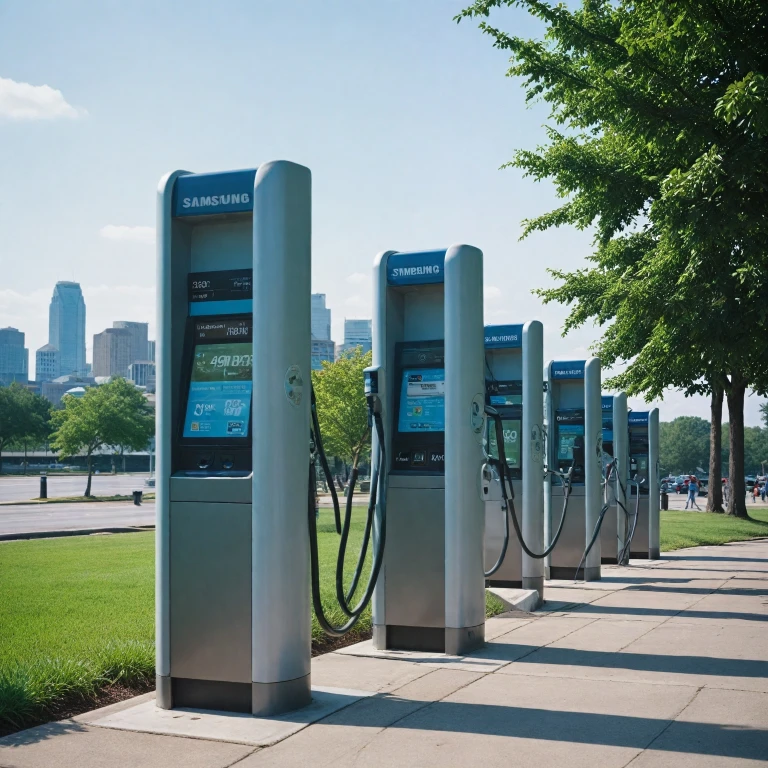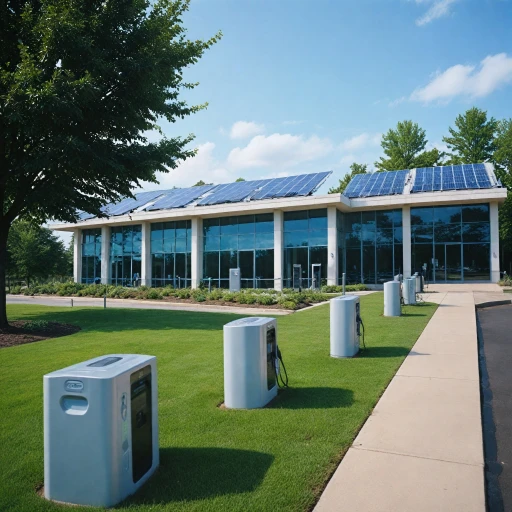
Factors Influencing Installation Costs
Key Elements Affecting Installation Expenses
When considering the cost of installing a MEV charging station in Chattanooga, several factors come into play. Understanding these elements can help you make informed decisions and potentially save on expenses. Here's a breakdown of the primary influences:
- Location and Site Preparation: The physical location of the charging station significantly impacts costs. Urban areas may have higher installation costs due to limited free space and the need for additional electrical infrastructure. In contrast, rural areas might require more extensive site preparation, which can also drive up expenses.
- Electrical System Upgrades: The existing electrical system at the installation site may need upgrades to support the new charging infrastructure. This could involve enhancing the power supply or integrating with a smart grid system, which can increase initial costs but offer long-term benefits.
- Charging Station Model: The type of charging station you choose will influence the cost. Fast charging stations, for instance, are typically more expensive than standard ones but offer quicker charging times, which can be beneficial in high-traffic areas.
- Permitting and Compliance: Navigating the permitting process and ensuring compliance with local regulations can add to the overall cost. It's essential to conduct a thorough analysis of these requirements early in the planning phase.
- Labor and Installation Time: The complexity of the installation will determine labor costs and the time required to complete the project. Engaging a reputable company with experience in installing charging stations can ensure efficient and cost-effective work.
These factors, among others, will continue to shape the financial landscape of installing MEV charging stations. For a deeper understanding of the components involved, you might find this guide on electric moped components useful.
Comparing Costs Across Different Locations
Analyzing Installation Expenses Across Various Regions
When assessing the cost of installing a MEV charging station, location plays a significant role. Whether you are implementing a fast charging facility in Chattanooga or exploring EV charging solutions in Virginia, understanding the geographical and local electrical landscape is crucial. Several factors affect these costs:- Infrastructure Readiness: Communities with existing charging infrastructure, such as Nashville Chattanooga, tend to have lower installation costs compared to areas that require significant electrical installations.
- Local Economics: Regions with high electric vehicle adoption can support competitive pricing from multiple electric companies, effectively reducing expenses.
- Space Availability: Urban areas with limited free space may encounter higher costs due to the premium on parking spaces needed for charging stations.
- Energy Sources and Efficiency: Areas that rely on sustainable energy, like solar power systems, can drive down long-term energy costs despite higher initial setup fees.
Understanding MEV Charging Station Technology
How MEV Technology Enhances the Charging Experience
Understanding the intricacies of MEV charging station technology is crucial for those considering the implementation of such systems. These stations are not just power outlets; they represent sophisticated ecosystems that integrate various high-tech components to provide efficient and seamless charging experiences for electric vehicles. The primary component of an MEV charging station is its electrical system, which typically operates in multiple phases to manage various power requirements effectively. Moreover, advancements in vehicle grid technology mean that these stations can communicate with electric vehicles in real time, adjusting power output based on the vehicle's needs and the current load on the grid. This smart grid capability ensures an optimal charging process, enhancing both speed and safety. Another significant aspect is the integration of solar power solutions. Many companies are investing in solar infrastructure to provide cost-effective energy options. This not only supports a sustainable and green future but also benefits the user in the long term by reducing reliance on traditional power sources. Charging stations are also being designed with space efficiency in mind. By utilizing existing parking spaces for the installation of charging infrastructure, they minimize the need for additional free space, making them more convenient for urban settings like Nashville and Chattanooga. Furthermore, some new models are part of pilot programs that explore fast charging capabilities. These programs aim to develop systems that can significantly reduce charging time, catering to the increasing demand for quick and efficient solutions that high-traffic areas require. All these technological advances underscore the importance of understanding the speed of electric scooters, especially in the context of an evolving vehicle charging landscape. As we continue to explore the relationship between electric vehicles and their charging stations, the need for ongoing data analysis becomes evident. Such insights will help design refined systems tailored to meet the growing needs of the electric vehicle community in the United States. These innovations will certainly play a part in the expansion and success of MEV charging infrastructure in years to come.Government Incentives and Rebates
Exploring Government Support for Electric Charging Infrastructures
Charging stations across the United States, particularly for electric vehicles, are at the forefront of transforming the vehicle charging landscape, making the role of government incentives and rebates pivotal. These incentives are often designed to mitigate the initial high costs involved in setting up charging stations, thereby encouraging both businesses and individuals to adapt to this green shift. Government incentives can take various forms, such as tax credits, grants, and subsidies. These supports aim to offset the initial cost of installing electric vehicle charging stations, promoting the development of smart grid systems and enhancing the efficiency of charging infrastructures. By easing the financial burden on companies and individuals, these incentives also facilitate the integration of renewable energy sources, like solar power, into the electric vehicle charging model. Furthermore, pilot programs rolled out in cities such as Chattanooga and Nashville serve as valuable studies into the effectiveness of these incentives. These programs often provide valuable data that helps companies in understanding the cost dynamics and potential returns on investment when installing MEV charging stations. Community services often play a significant role, as well. By incorporating charging stations into public spaces, like parking spaces and community centers, there is an increase in charging accessibility and convenience for electric vehicle owners. Additionally, the integration of vehicle grid systems allows for better real-time analysis, optimizing the energy distribution and enhancing the cost-effectiveness of these charging infrastructures in the long term. Overall, supported by a blend of governmental initiatives and public participation, the adoption and adaptation of charging infrastructures not only aid in reducing emissions but also ensure a sustainable future for electric vehicles. As more data becomes available and technology continues to advance, these incentives and rebates will continue to evolve, offering promising benefits both economically and environmentally.Long-term Benefits of MEV Charging Stations
Economic and Environmental Advantages
Investing in MEV charging stations offers significant long-term benefits, both economically and environmentally. As electric vehicles (EVs) become more prevalent in the United States, the demand for efficient charging infrastructure will continue to grow. This creates a cost-effective opportunity for businesses and communities to support sustainable transportation.
Boosting Local Economy and Community Services
By installing MEV charging stations, local businesses can attract more customers who drive electric vehicles. This not only increases foot traffic but also enhances the community's reputation as a forward-thinking, eco-friendly area. Moreover, these stations can be integrated into community services, providing essential infrastructure that supports a cleaner environment.
Energy Efficiency and Smart Grid Integration
Modern charging stations are designed to work efficiently with the existing electrical system. They can be part of a smart grid, allowing for real-time data analysis and energy management. This integration helps optimize power usage, reducing strain on the electrical grid during peak times and ensuring a stable energy supply.
Environmental Impact and Sustainability
MEV charging stations contribute to reducing greenhouse gas emissions by encouraging the use of electric vehicles. As more drivers switch from traditional gasoline-powered vehicles to EVs, the overall carbon footprint decreases. This shift is crucial for achieving long-term environmental sustainability goals.
Incentives for Future Development
Government incentives and rebates, as discussed earlier, play a crucial role in making the installation of MEV charging stations more financially viable. These incentives will help offset initial costs and encourage further development of charging infrastructure, ensuring that cities like Chattanooga and Nashville can accommodate the growing number of electric vehicles.
Challenges and Considerations
Potential Roadblocks in MEV Charging Installation
Installing a MEV charging station involves several challenges. It's essential to have a comprehensive understanding of these factors to make informed decisions:- Space Constraints: The availability of free space is crucial. Many existing infrastructures may face limitations in parking spaces, making it challenging to allocate enough room for charging stations. A detailed analysis of the available area and community services is necessary to maximize the use of the site effectively.
- Electrical System Integration: Integrating with the existing electrical systems requires careful planning to prevent overloading. This involves considering the power requirements and ensuring compatibility with the smart grid and vehicle grid. The use of solar power and other renewable energy sources might be a cost-effective solution to overcome potential electrical challenges.
- Phase of Development: At an initial phase, a pilot program can be beneficial. By starting small and gradually expanding, companies can gather real-time data on system efficiency and make necessary adjustments. This phase will help assess the viability and make the system more robust.
- Economic Factors: Cost continues to be a critical concern. A comprehensive study on expenditures related to installation and maintenance will assist in projecting long-term benefits. Collaborating with experienced companies in the United States can provide valuable insights and cost-effective solutions.
- Technological Challenges: Fast charging technology and advancements in electric vehicle models require continuous updates to the charging infrastructure. It’s crucial to adopt a flexible model that can adapt to the rapidly evolving electric vehicle (EV) market.












